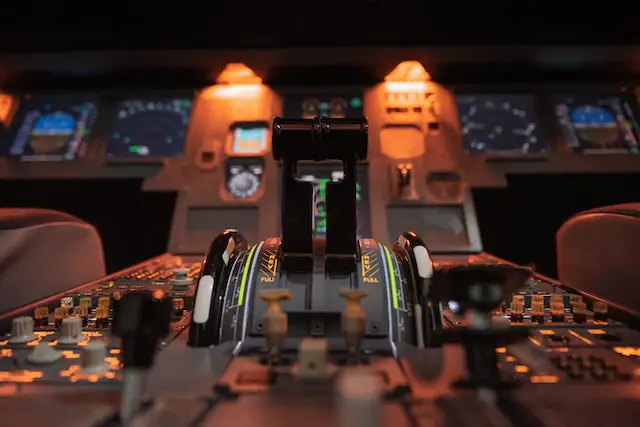The aeronautics industry has undergone remarkable transformations since the Wright brothers’ first powered flight in 1903. From technological advancements to increased safety measures, the industry has continually evolved to meet the growing demand for air travel. In this post, we will explore the significant changes that have taken place in the aeronautics industry evolution over the years and their impact on air transportation.
Table of Contents
Technological advancements

The aeronautics industry has been at the forefront of technological innovation. From the early days of propeller-driven aircraft to the introduction of jet engines, the industry has constantly pushed the boundaries of engineering and design.
Over time, advancements such as composite materials, computer-aided design, and additive manufacturing have revolutionized aircraft manufacturing processes, making aircraft lighter, more efficient, and safer. Moreover, the development of supersonic jets and unmanned aerial vehicles (UAVs) has opened up new possibilities for air travel and exploration.
Increased safety measures
Safety has consistently remained a paramount concern in the aeronautics industry. Over time, there have been notable advancements in safety measures, establishing air travel as one of the safest modes of transportation.
Enhanced aircraft design, featuring redundant systems and improved structural integrity, has effectively minimized the probability of accidents. Furthermore, the integration of advanced navigation systems, such as GPS, along with automated air traffic control procedures, has considerably bolstered situational awareness and communication.
These measures collectively contribute to fostering an environment of secure and efficient air travel. Radar level transmitters, which enable accurate monitoring of fuel levels and prevent potential hazards, are among the technological innovations employed to enhance safety in the aeronautics industry.
Globalization and market expansion
The aeronautics industry has witnessed tremendous expansion and globalization. With the growth of low-cost carriers and emerging markets, air travel has become more accessible to a larger segment of the population. This has led to the development of new airports, the expansion of existing ones, and the introduction of new routes and destinations.
The rise of global aviation alliances and partnerships has also facilitated smoother connectivity and improved passenger experiences. As a result, the industry has become more interconnected, providing increased opportunities for both leisure and business travelers.
Environmental awareness and sustainable practices
In recent years, there has been a significant shift towards environmental sustainability in the aeronautics industry. Aircraft manufacturers and airlines are actively working to reduce their carbon footprint, noise pollution, and waste. The development of more fuel-efficient aircraft, such as the Boeing 787 Dreamliner and Airbus A350, has helped to lower emissions per passenger kilometer.
Furthermore, the industry is exploring the use of sustainable aviation fuels made from renewable sources and implementing operational practices like optimized flight routes to minimize environmental impact. These initiatives aim to make air travel more sustainable and mitigate the industry’s contribution to climate change.
Advances in air traffic management
With the increasing number of aircraft in the skies, air traffic management has undergone significant advancements. Advanced technologies, such as satellite-based navigation systems like the Global Navigation Satellite System (GNSS), have improved aircraft tracking and precision.
Additionally, improved communication systems and automated air traffic control procedures have enhanced the efficiency and safety of air travel. These advancements have allowed for better utilization of airspace, reduced congestion, and more accurate arrival and departure times, resulting in smoother and more reliable air transportation.
Digital transformation
The aeronautics industry has embraced digital transformation, leading to significant changes in various aspects of operations. From digital ticketing and online check-in to automated baggage handling and in-flight entertainment systems, technology has transformed the passenger experience.
Data analytics and artificial intelligence are also being utilized for predictive maintenance, optimizing flight routes, and personalizing passenger services. Moreover, the adoption of cloud computing and big data analytics has enabled airlines to manage their operations more efficiently and make data-driven decisions for improved performance.
Shift toward electric and hybrid aircraft
In response to the increasing focus on environmental sustainability, the aeronautics industry is exploring electric and hybrid aircraft. These technologies aim to reduce carbon emissions and noise pollution significantly. Electric propulsion systems and hybrid-electric aircraft are being developed, offering potential alternatives to conventional jet engines.
Although electric aviation is still in its early stages, significant progress has been made, with companies testing electric-powered aircraft prototypes and working toward commercial viability. This shift towards electric and hybrid aircraft represents a transformative leap in air travel, promising cleaner and quieter skies in the future.
Increased collaboration and partnerships
Collaboration and partnerships have become more prevalent in the aeronautics industry. Aircraft manufacturers, airlines, research institutions, and governments are working together to address common challenges, develop new technologies, and drive innovation. This collaborative approach has resulted in the sharing of knowledge, pooling of resources, and faster progress in the industry.
Partnerships between airlines and aircraft manufacturers have also led to the customization of aircraft to suit specific operational requirements, enhancing efficiency and customer experience. By working together, stakeholders in the aeronautics industry are shaping the future of air travel.
Video: Aviation Evolution: The Incredible Progress in Aircraft Engineering
Final Thoughts About Aeronautics Industry Evolution
The aeronautics industry has undergone remarkable changes over time, driven by technological advancements, increased safety measures, globalization, and environmental sustainability. With the continued focus on innovation and collaboration, the industry is poised to embrace further transformations, providing a safer, more efficient, and environmentally conscious future for air transportation.



